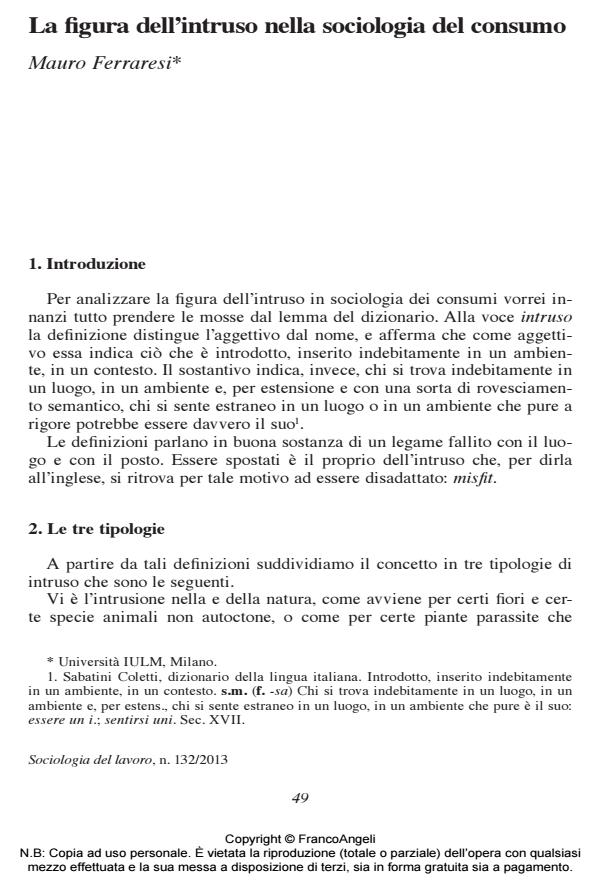The concept of intruder in the sociology of consumption
Journal title SOCIOLOGIA DEL LAVORO
Author/s Mauro Ferraresi
Publishing Year 2013 Issue 2013/132
Language Italian Pages 12 P. 49-60 File size 255 KB
DOI 10.3280/SL2013-132005
DOI is like a bar code for intellectual property: to have more infomation
click here
Below, you can see the article first page
If you want to buy this article in PDF format, you can do it, following the instructions to buy download credits

FrancoAngeli is member of Publishers International Linking Association, Inc (PILA), a not-for-profit association which run the CrossRef service enabling links to and from online scholarly content.
The article explains that there are three types of intruder and the intruder in the sociology of consumption is a concept that coincides with the consumer and supports its main features. The consumer is an intruder, or rather a stranger, because refractory to the analysis and studies. This is not just an epistemological question, because the today consumer eludes us because of the system of consumption that has made us strangers to ourselves. That happens because the human being is rapidly changing technological and anthropological, and because he is now out of place in the world as demonstrated by the state of the placet, by the growing ecological crisis and by the issue of the sustainability. The opacity of the consumer testifies to the opacity of the society that is increasingly difficult to investigate unless the sociology of consumption uses new heuristic concepts useful to improve our understanding and the power of the search.
Keywords: Intruder, foreign, consumption mix, consumer, reflexivity, system
Mauro Ferraresi, La figura dell’intruso nella sociologia del consumo in "SOCIOLOGIA DEL LAVORO " 132/2013, pp 49-60, DOI: 10.3280/SL2013-132005